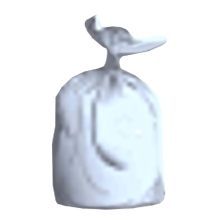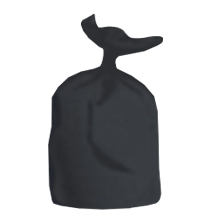Guernsey Dairy provides islanders with fresh milk and other dairy produce, all year round, supplied by local farmers from the iconic Guernsey Cattle Breed. It currently operates seven days a week, to produce milk, butter, cream, cheese and ice cream.

However the Dairy's importance extends far beyond the supply of dairy products. It is a key element of the local farming industry, which is part of our cultural heritage and has shaped the island's rural character, not to mention sustaining the iconic Guernsey Cow.
The dairy has operated from its St Andrew's site for nearly 70 years, and the last major refurbishment was more than 30 years ago. Much of the building fabric and equipment is now reaching the end of its operational life and the ongoing challenge of maintaining this ageing infrastructure presents significant risks to the supply of local milk. Lack of space and the configuration of the current process equipment is also an obstacle to introducing modern and efficient machinery.
The States' Trading Supervisory Board has published its Future Guernsey Dairy Project policy letter, which can be downloaded using the links on either the top right or bottom of this page. This sets out proposals for addressing the condition of the facility and enabling more efficient operation. This will either be through a major refurbishment on the current site or a new dairy in a new location.
Any new development could also incorporate other facilities, to better promote the Guernsey Cow, the island's centuries-old farming traditions, and local produce. For example, creating a heritage centre alongside a new dairy could provide a tourist attraction and focus for education, to showcase the iconic cattle breed and local farming.
The Dairy could also encourage micro-dairies in the future, run by third parties, which would be supplied with milk to produce speciality local dairy products. Similar businesses already exist, producing local cheeses, ice-cream and yogurt.
Questions & Answers
Will this result in significant product price rises?
- The retail price of milk is set by retailers, but it is obviously influenced by the wholesale gate price set by the Dairy. Guernsey Dairy is very conscious that its products must remain affordable, and at the same time it has to ensure the dairy farming business remains financially sustainable. Part of the reason for investing in a new or refurbished facility is to enable improved efficiency, through new more modern equipment and production processes.
Have any sites been identified for a new Dairy?
- A number of options are being considered. One is to remain on the existing site and carry out a major refurbishment and possible expansion. Another is to build a purpose built Dairy on a completely new site.
- Due to the complexity around maintaining current operations while carrying out a major refurbishment - even for a reduced product range - a new build on a new site is currently the preferred way forward. However if the States gives the go ahead to the current proposals, the options will be worked up in more detail to identify the optimum solution.
What are the timescales of this project?
- If the States agree the current proposals, a detailed business case will be developed, to identify the best option. More detailed plans, including any site details, will then be presented to the States for final approval. That is likely to be in 2022, and it is anticipated the development of a new or refurbished Dairy will be completed in 2024.
- In the meantime, significant investment will continue to fund a programme of capital works to maintain the current operations. The urgent requirement is to ensure the Guernsey Dairy is able to continue to provide fresh milk for islanders.
Is milk consumption declining, and does that have an impact ?
- Milk sales have fallen slightly in recent years, which is partly due to the decline in doorstep deliveries and in part due to extended shelf life. However, a survey in December 2019 has confirmed that nearly nine out of ten local households still regularly buy Guernsey Dairy milk.
- The survey also identified that nearly a third of households also now consume other milk (e.g. lactose free, or goat's milk) and non-dairy alternatives. The pattern is similar in the UK, where industry estimates suggest around 29% of households regularly consume plant-based drinks.
How will the project be funded?
- The Guernsey Dairy does not have sufficient financial reserves to fund a major refurbishment or new facility. Similarly, is not considered to be affordable from future revenue, without unduly impacting on the price of milk, as the operating margins are relatively small. Therefore, funding is being sought from the States Capital Reserve. This reflects the wider contribution that the Dairy makes to the island, in terms of helping to support the local farming community in maintaining Guernsey's rural character.
Does dairy farming contribute to greenhouse gas emissions?
- Agriculture, land use, land use change and forestry combined contribute a small proportion of Guernsey's total greenhouse gas emissions (3.7% in 2017). The majority of the emissions are methane released by the digestive processes of cattle. However the carbon impact of local production is offset by the fact it removes the need to transporting dairy produce, potentially long distances.
- The dairy industry also makes a wider social and environmental contribution. It has shaped the farmed landscape of the island for centuries - nearly half of Guernsey's land is allocated to agriculture and the 14 dairy farms constitute around a quarter of this. These farms support biodiversity plans, as an important contribution to biodiversity and habitat.
What do our farmers think is the best option?
- Guernsey Dairy been in regular dialogue with the farmers and the Guernsey Farmers Association who are supportive of the proposals.
How is the existing Guernsey Dairy no longer fit for purpose?
- The Dairy has operated from its St Andrew's site for nearly 70 years, and the last major refurbishment was more than 30 years ago. Much of the building fabric and equipment is now reaching the end of its operational life and there are ongoing challenges in maintaining this ageing infrastructure and ensuring the continuity of supply of the highest quality fresh milk and other dairy products.
- Significant investment is being made as part of the Dairy's long term business plan. Since 2016 over £1million has already been spent on improvements and last year an additional £470,000 was spent on repairs and maintenance.
Why is a new dairy the preferred option, and is it not more expensive?
- The project is looking at all options, from refurbishing and redeveloping the facilities on the current site to building a new, modern dairy in a new location.
- The dairy currently operates seven days a week, to produce Guernsey milk, butter, cream, cheese and ice cream. Due to the huge complexity around maintaining current operations while carrying out a major refurbishment - even for a reduced product range - a redevelopment on the existing site is currently not the preferred option.
- However if States Members agree to the current proposals, further work would be carried out to assess all the viable options before a final plan is presented to the States.
Are the hygiene issues a potential health hazard?
- All of our products are rigorously tested against stringent industry standards. This starts with milk before it leaves the farm and at multiple stages during the production process and before it leaves the Dairy. Butter, cream, ice cream and cheese are similarly tested.
- The Dairy's recent two start food hygiene star rating reflects the condition and fabric of the existing facilities and not the food safety or quality of any of the Dairy's products which remains of the highest standard.
Will a new Dairy be a white elephant if consumption continues to decline?
- The vast majority of households (89%) still regularly consume Guernsey Dairy milk.
- The principal reason for the existence of the Guernsey Dairy is to support the maintenance of Guernsey's rural environment and to protect the island's unique herd of Guernsey Cows. This project is therefore inextricably linked to the wider dairy industry and its importance stretches well beyond a simple replacement milk processing facility.
- However without major investment, there is a risk that Guernsey Dairy is no longer able to meet the island's demand for milk, which will mean having to import and that would have major consequences for the local industry.
Shouldn't we just import milk?
- Without major investment, there is a risk that Guernsey Dairy is no longer able to meet the island's demand for milk. That would mean importing milk, which would be cheaper but would undermine the essential contribution which local dairy farming makes to the island. This could result in the irreversible decline in the industry, adversely impacting on the biodiversity of the countryside and Guernsey's unique rural environment; and ultimately lead to the demise of the iconic Guernsey Cow in her island home.
How does Guernsey Dairy manage its waste?
- Waste products produced during the processing of milk and other dairy produce are currently disposed of (this includes waste milk, water and cleansing materials). This is primarily because of the lack of capacity on the existing site and equipment to deal with this waste any other way. This situation will need to be addressed before new water pollution legislation is introduced to the island. This will play a significant part in the plans made in the proposed refurbishment or rebuild of the Guernsey Dairy.













